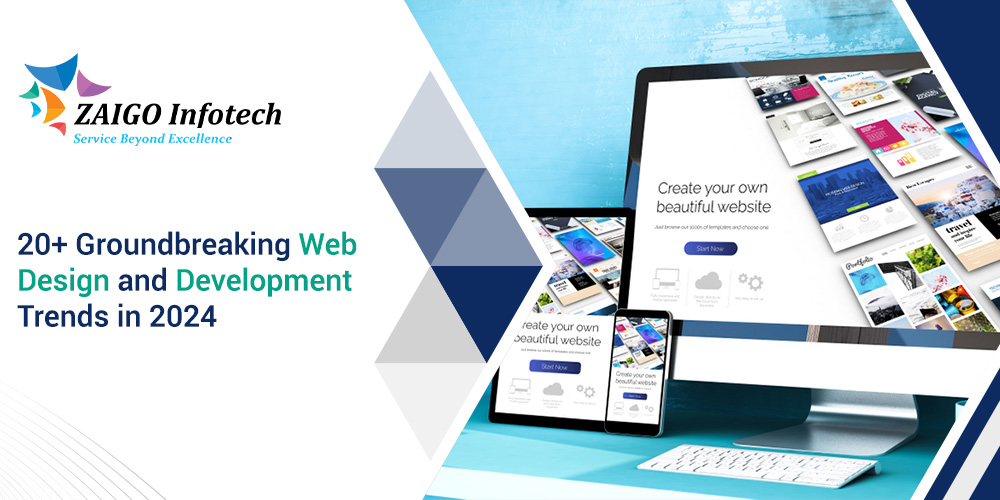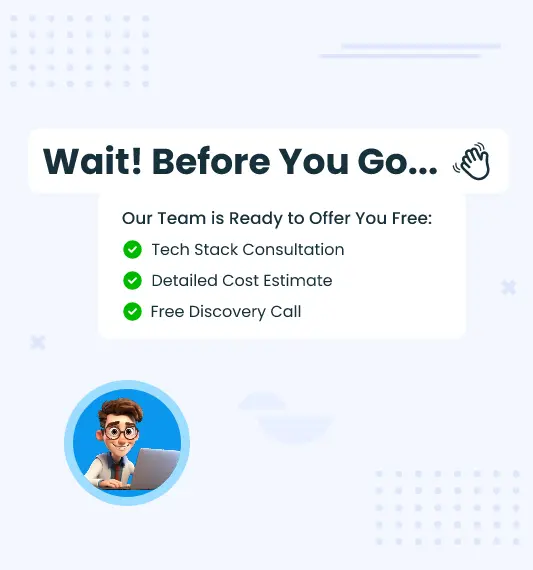To seamlessly streamline operations and ensure projects are completed smoothly with goals easily achieved, many businesses are steadfastly adopting Agile software development methodology. Agile software development approach is an excellent way for businesses, vendors, and even the customers to fulfill their needs and desires in a robust manner. However, it’s important to remember that everything has its flaws, including Agile methodology.
Today, we’re going to give you a heads-up on the common risks your business may face when following Agile development. But don’t worry! We’re not just covering the problems; we’re also providing solutions to make your Agile projects run as smoothly as butter.
Types of Risks in Agile Software Projects
Every software development company that has implemented or is currently using Agile principles in project development will be familiar with the following risks. We’ve categorized them for easier understanding:
Team and Resource Risks

Let’s dive into the potential risks associated with Agile software development that revolve around your teams and resources:
Knowledge Silos
With Agile methodology promoting team segregation based on skills and efficiency over the top of its lungs, there’s a risk of knowledge becoming confined to specific individuals. In short, only a select few may possess the expertise required for certain tasks. If these individuals leave the company or are on leave, it could disrupt the rest of the tasks and throw the initial plan off track.
Task Switching
Encouraging flexibility and versatility, Agile software development methodology often requires team members to switch their tasks. But when deadlines are tight, this can become problematic. Those switching tasks may struggle to quickly grasp new requirements, goals, and collaborate with different team members. This rapid shift can be overwhelming, as there’s little room for the team to breath and re-engage with the new task.
Burnout
Most of the time, Agile projects witness frequent, shorter sprints. The continuous cycle of iterative goals and requirements leaves little time for the team to rest and recharge. Team members are often pushed to meet tight deadlines, leading to burnout, which is a fickle mistress to productivity and team morale.
Role Ambiguity
Too much flexibility can result in unclear roles and responsibilities within the team. Also, frequent task switching can spread team members thin across various aspects of the project. This increases the likelihood of duplicated roles and tasks. Besides, unclear role distribution can consume more time, hindering progress towards the goal.
Quality and Technical Risks
When discussing the risks Agile software projects may face in terms of quality, consider the following:
Quality Issues from Short Sprints
The iterative process, combined with strict deadlines and an inefficient strategy, forces teams to adapt to shorter sprints. While this approach helps achieve goals more quickly, it can pose a significant threat to quality. As the saying goes, “Good things come to those who wait”. A fully functional project needs enough time to be developed that promises quality.
Technical Debt
Desperate times call for desperate measures. When faced with a short sprint, teams will hunt for ways to meet deadlines. While hitting the deadline is crucial, the pressure to do so can push teams to take shortcuts, leaving the project with quality loopholes. These shortcuts will inevitably become a major headache later in the project, leading to technical debt.
Planning and Scope Risks
To achieve the goal envisioned by the client, a perfect strategy is the secret sauce. However, when this strategy is missing, the following risks may creep:
Scope Creep
When new requirements and needs emerge from the client, it can extend the project timeline. Not only do new requirements introduce additional tasks, but they also demand more time, budget, and resources. These factors can drag the project out longer than expected, ultimately leading to inefficiencies.
Short-term Focus
Agile project management revolves around sprints, with each sprint representing specific goals to be achieved. While progress may seem on track, this short-term focus blurs out the ultimate bigger picture to the team. The team may be gathering the ingredients without understanding what dish they’re actually cooking, or even what the final dish should look like.
Inaccurate Budget and Timeline Estimation
Agile software projects are mostly about assuming the budget and timelines. However, there is a great possibility that these estimates will be different from assumptions in reality. Inaccuracies and unpredictability in time and budget can lead to unnecessary costs, misallocated resources, and, most importantly, a decline in client satisfaction.
Documentation and Progress Tracking Risks
In the process of designing, developing, and deploying an Agile project, sometimes the team may opt to skip steps or cut corners, leading to the following risks:
Challenges in Progress Measurement
A common issue in Agile software development arises when teams rely on traditional methods to track progress. Using outdated status-tracking techniques can undermine the effectiveness of Agile processes. In essence, relying on traditional metrics to gauge performance and goals can result in inaccurate results and create communication challenges with stakeholders.
Lack of Comprehensive Documentation
The penultimate objective of Agile software development is to deliver a project that works and breathes quality. However, focussing solely on this objective can discourage teams from creating comprehensive documentation. Without proper documentation, making improvements or changes to the code becomes difficult, as does providing training to clients, for starters.
Collaboration and Dependency Risks
It’s important to remember that Agile is a team player, involving collaboration and bringing multiple departments to the table. While this strategy unites various skills, it can also lead to messy situations like the following:
Dependency on External Teams or Departments
Collaboration often means relying on external teams. Many Agile teams depend on external vendors for functions like QA and testing to ensure quality delivery. However, delays from these external departments can disrupt the continuous, iterative development process, creating roadblocks in the project.
High Dependency on Collaboration
For smooth and efficient collaboration, communication methods must be dynamic and available at all times to track the project’s status and keep the Agile development strategies on course. Even slight miscommunications in collaboration can lead to inefficiencies and have a negative impact on the project.
Pro Tips to Prevent Agile Risks

Overwhelmed with the above risks? You can easily keep them at bay by following these industry-standard tips, ensuring that your Agile software development project always succeeds:
Extended Sprints for Complex Tasks
For tasks that are particularly complex and require extra time to ensure quality, it’s essential to extend the sprint duration. Providing adequate time for such tasks ensures the team can focus and deliver high-quality results.
Iterative Planning and Re-assessment
To effectively tackle budget and time issues while keeping scope creep offshore, continuous planning is essential. Regularly reassess the project and update the initial plan to incorporate new changes. Collaborate closely with stakeholders to ensure all Agile development strategies align with the project’s goals.
Pair Programming and Team Integration Exercises
Adopting pair programming can help solve coding issues in a breeze. Assigning two coders to a task ensures quicker identification of bugs and code faults, saving time and resources. Furthermore, implementing team integration exercises fosters a cohesive atmosphere, improving communication and teamwork.
Clear Contracts and SLAs with External Teams
When working with external teams (such as design, testing, and QA), follow a strictly laid-out plan and establish clear contracts that outline timelines. This ensures no delays and helps maintain project momentum.
Collaboration Tools and Regular Communication
Implementing tools that facilitate easy collaboration is appreciated, especially when dealing with multiple stakeholders. Effective communication is key; so adopting tools for regular, seamless communication ensures there are no miscommunications during the development of Agile projects.
Implementing Minimum Viable Documentation (MVD)
While Agile development loves to go with functional software rather than comprehensive documentation, it’s still important to document key details for future reference, training, or code modifications. Adopting the minimum viable documentation approach means documenting only the essential and necessary information, ensuring efficiency without overloading the team.
Clear Role Definitions and Accountability
Defining the roles and responsibilities of all team members at the start of every sprint tackles issues of duplication of tasks and unnecessary allocation of time and resources. This clarity ensures a smooth-running Agile software development, making it easier to bring the project to life.
Cross-Functional Training and Knowledge Sharing
The best way to beat the issues of knowledge silos is by ensuring everyone has hands-on experience or at least a basic understanding of key tasks. Cross-functional training enables team members to cover for one another in case of absences, preventing delays and ensuring the project stays on track.
Trends to Combat the Risks in Agile Projects

Our digitally enhanced world is witnessing the birth of new trends with some of them transforming industries and being the game-changers. Below are Agile software development trends that will shape the future of Agile software development methodology, helping to mitigate the most common risks associated in Agile projects:
Automated QA and Testing
To elevate your Agile practices, introduce automation wherever possible and impactful. Enhancing automation in QA and testing helps identify bugs and issues in real time. This significantly speeds up the feedback loop and improves overall project efficiency.
AI-Driven Risk Analysis and Prediction
As AI becomes more integrated into daily operations, incorporating it into your Agile projects can be highly beneficial. Using AI tools to analyze risks and predict issues such as poor resource allocation, security vulnerabilities, and quality bottlenecks allows teams to take proactive measures, ensuring quality and time efficiency.
Integrated DevSecOps
Integrating DevSecOps in your projects makes sure that security is prioritized through the Agile project development life cycle. This DevOps team continuously monitors and embeds security practices into every pipeline, eliminating security concerns.
Velocity Charts and Bug Trends
Tracking a team’s performance and progress is essential to keeping Agile software development on track. Velocity charts are a great way to measure progress, while bug trends help identify recurring issues.
Relying on Continuous Delivery Practices
Releasing small, incremental updates on a continuous basis assists in addressing issues in the short term. Allowing for quick testing, easy deployment, and quicker adaptation, this becomes one of the best Agile software development trends. All of this is not so easy when delivering large-scale releases.
Blended Agile and Lean Approaches
Agile is known for its iterative nature, while lean loves to go with continuous improvement. Mixing these two methodologies allows businesses to minimize redundancies, prioritize high-value tasks, and maintain a focus on continuous improvement.
Thriving or Drowning: Ask Yourself these Red Flag Questions
Bubbling with curiosity if you’re truly slaying as the Agile software development company? These questions are designed to help you evaluate how well your Agile projects are progressing.
- Do you have team members whose absence causes disruptions in the project progress due to knowledge silos?
- Are tasks frequently delayed or postponed due to unclear roles and responsibilities?
- Do you notice too many meetings causing delays in tasks and timelines?
- Are new requirements often added mid-sprint?
- Do your team members frequently play catch-up due to unfinished sprint tasks or have to stay overtime?
If your answer is “yes” to a majority of these questions, it’s high time to implement the solutions and Agile software development trends highlighted above to improve your Agile development process and ensure effortless project execution. Or you can partner with the best agile software development company.
Bottom Line
In any project development, hitting obstacles is a common challenge. However, what matters most is having the right solutions stacked up your sleeve to tackle any issues. This enables you to meet deadlines, increase efficiency, and ensure stakeholder satisfaction. Although Agile software development tags along some common risks, implementing the solutions outlined in this blog will significantly benefit your projects.
Struggling to find the best Agile software development company to make your projects flawless? Well, we’re right here. Contact us today and schedule a free demo!















